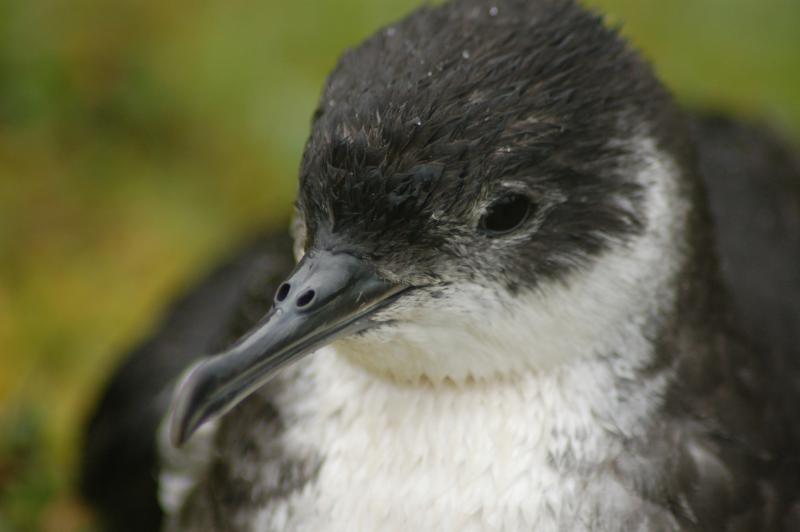 Beccy MacDonald is the Warden for Lundy Island. She oversees all of the animal conservation work on the island and is responsible for the welfare of the island's birds, from sparrows to kittiwakes.
Beccy MacDonald is the Warden for Lundy Island. She oversees all of the animal conservation work on the island and is responsible for the welfare of the island's birds, from sparrows to kittiwakes.
The Manx shearwater (Puffinus puffinus) is a type of seabird usually found on islands around the UK, including Lundy. In 1939, the Manx shearwater population on Lundy numbered around 3,500 pairs. In 2001, this had fallen to only 166 pairs making them the main seabird conservation priority on Lundy. The Seabird Recovery Project was set up over a decade ago to safeguard the Manx shearwaters (and other seabirds) and improve opportunities for breeding. The project was a success, with an estimated 3,451 pairs of Manx shearwaters documented in 2013 – an incredible 2108% increase.

The Manx shearwater
The success of the Seabird Recovery Project on Lundy has brought with it lots of possibilities and opportunities for further studies of the island’s important seabird colonies. After hearing about the success of artificial burrow projects with shearwaters elsewhere, we decided to create some of our own to assist us with monitoring and learning more about their life histories.
Over a week in March, our mission was to build and install 30 Manx shearwater artificial burrows within 4 days. Our team included our new Volunteer Seasonal Assistant Warden Conor, Lundy Field Society volunteers Kelly, Rob, Sue, Dave and Tony, as well as Helen and Lydia from the Royal Society for the Protection of Birds (RSPB). Pete from the Lundy maintenance team kindly pre-cut all of the wood and pipe ready for us to begin assembling the ‘Manxie villas’ on Tuesday morning. We were able to create all 30 by lunchtime.

Making the "Manxie villas"
After lunch, we set off to the west coast to install the first batch of villas. It took a while to work out how to get the first villa and its burrow in place without disturbing the ground. By the end of the day, 5 villas were all in place. The team were in high spirits after a successful first day. We returned to the west coast early on Wednesday morning. After deciding on the location for a second settlement for 6 villas, the team split into three smaller groups. With an air of competition, we set about installing them as quickly and as efficiently as possible. By the end of the day, we had installed 19 more villas.
Despite stormy weather, we were able to install the remaining 6 by Friday morning. We hope that we’ll have some new residents moving in within the next month or so. The only thing left is to name the settlements and villas – this will help aid in our monitoring work. We’ll be holding a competition on social media, so keep an eye out on the Lundy Conservation Team Facebook page for more details soon.

The finished artificial burrows, installed around the island
Lundy is teeming with wildlife. To learn more, visit Lundy's wildlife section on our website.
Book your stay at one of Lundy's 23 Landmarks here